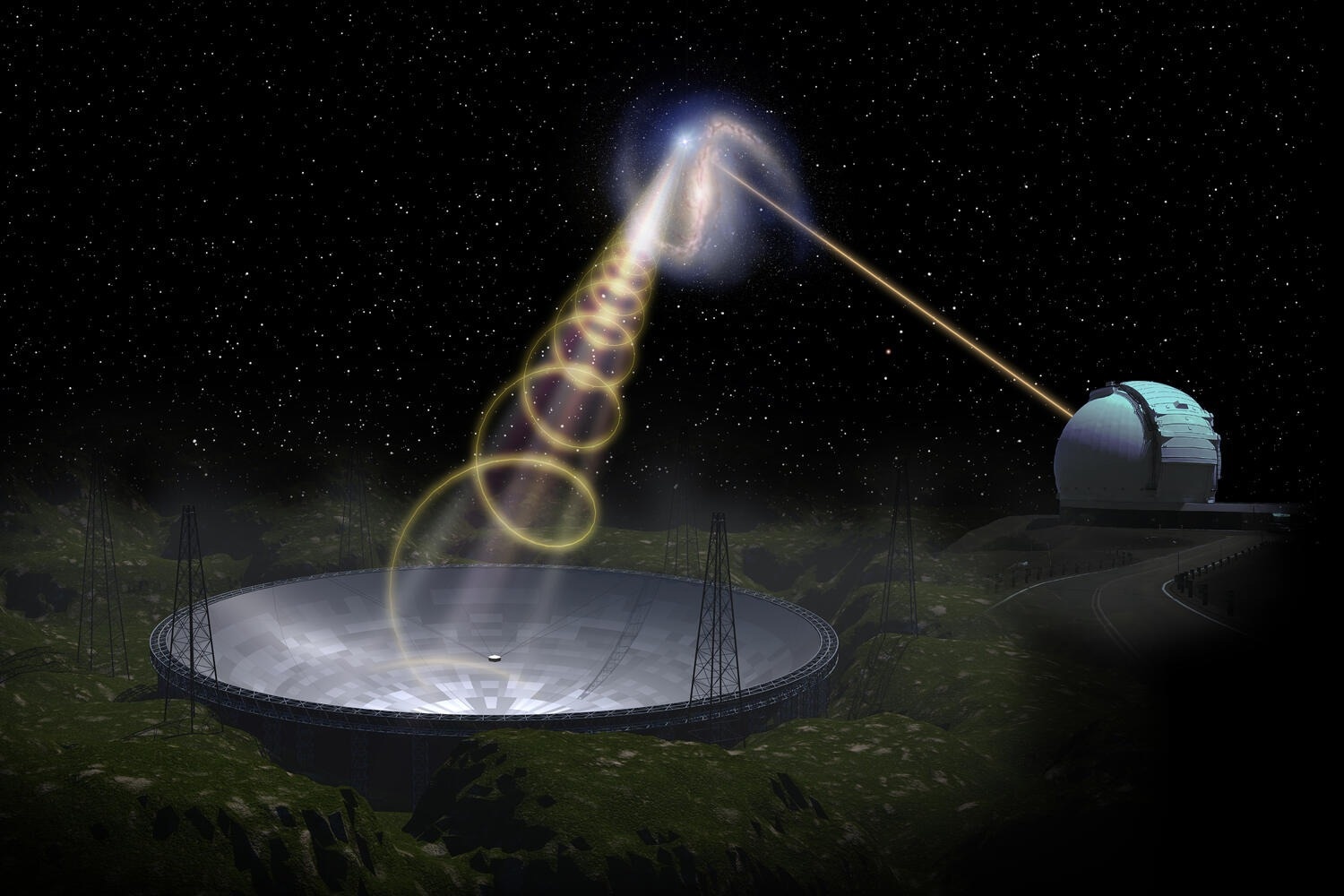Reviewed by Mila PereraSep 22 2022
The energy released by one fast radio burst (FRB), a millisecond-long cosmic explosion, is equal to the sun’s annual output.
 Artist’s conception of Five-hundred-meter Aperture Spherical radio Telescope (FAST) in China. Image Credit: Jingchuan Yu
Artist’s conception of Five-hundred-meter Aperture Spherical radio Telescope (FAST) in China. Image Credit: Jingchuan Yu
The mysterious nature of deep-space electromagnetic radio wave pulses has baffled scientists for more than 15 years, and the recently published study only adds to the enigma surrounding them.
Unexpected findings from a series of cosmic radio bursts by an international team of researchers, including UNLV astrophysicist Bing Zhang, have been published in the September 21st, 2022 issue of the journal Nature. These findings cast doubt on the conventional wisdom regarding the physical makeup and the primary source of FRBs.
The huge Five Hundred Meter Aperture Spherical Radio Telescope (FAST) in China was used to observe the cosmic FRB in late spring 2021.
The team, which included Heng Xu, Kejia Lee, Subo Dong from Peking University, Weiwei Zhu from the National Astronomical Observatories of China, and Zhang, discovered 1,863 bursts from the active fast radio burst source known as FRB 20201124A in 82 hours over 54 days.
This is the largest sample of FRB data with polarization information from one single source.
Kejia Lee, Associate Professor, The Kavli Institute for Astronomy and Astrophysics, Peking University
A magnetar, a compact neutron star the size of a city with an immensely strong magnetic field, could have produced the quick radio burst recently observed in the Milky Way galaxy.
It is still unclear, however, where the far-off cosmic rapid radio bursts originate. Scientists are now reevaluating past theories concerning radio bursts in light of recent observations.
These observations brought us back to the drawing board. It is clear that FRBs are more mysterious than what we have imagined. More multi-wavelength observational campaigns are needed to further unveil the nature of these objects.
Bing Zhang, Astrophysicist, University of Nevada, Las Vegas
Zhang is also the founding director of UNLV’s Nevada Center for Astrophysics.
The irregular, brief oscillations of the so-called “Faraday rotation measure,” which is the strength of the magnetic field and particle density close to the FRB source, are what scientists find surprising about the most recent data.
During the first 36 days of observation, the changes fluctuated before abruptly ceasing during the final 18 days before the source was extinguished.
Zhang added, “I equate it to filming a movie of the surroundings of an FRB source, and our film revealed a complex, dynamically evolving, magnetized environment that was never imagined before. Such an environment is not straightforwardly expected for an isolated magnetar. Something else might be in the vicinity of the FRB engine, possibly a binary companion.”
The scientists also used the 10 m Keck telescopes on Mauna Kea in Hawaii to observe the host galaxy of the FRB.
Young magnetars are thought to live in star-forming regions of star-forming galaxies, according to Zhang, but the optical image of the host galaxy unexpectedly reveals that it is a metal-rich barred spiral galaxy similar to the Milky Way.
There is little star formation in the area where the FRB is located.
This location is inconsistent with a young magnetar central engine formed during an extreme explosion such as a long gamma-ray burst or a superluminous supernova, widely speculated progenitors of active FRB engines.
Subo Dong, Associate Professor, The Kavli Institute for Astronomy and Astrophysics, Peking University
A total of 74 co-authors from 30 universities contributed to the study. Collaboration partners include Purple Mountain Observatory, Yunnan University, UC Berkeley, Caltech, Princeton University, University of Hawaii, and other institutions from China, the USA, Australia, Germany, and Israel, in addition to UNLV, Peking University, and the National Astronomical Observatories of China.
Journal Reference
Xu, H., et al. (2022) A fast radio burst source at a complex magnetized site in a barred galaxy. Nature. doi:10.1038/s41586-022-05071-8.